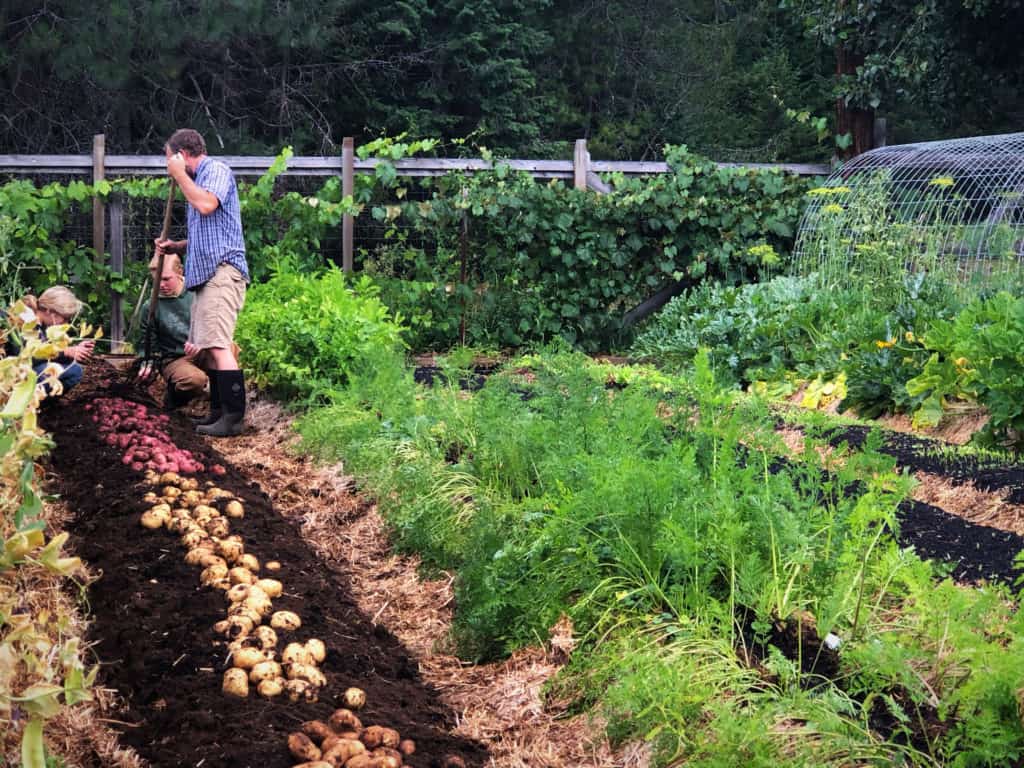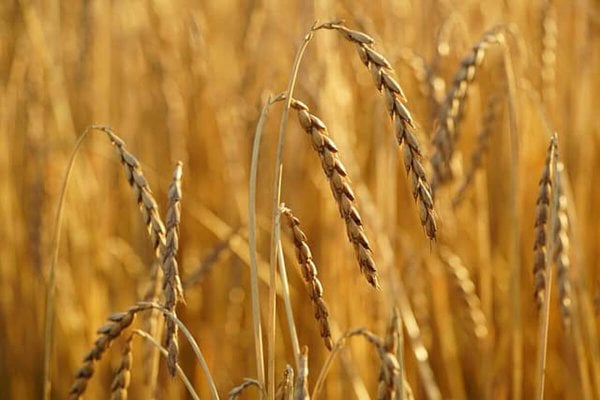Whether you’re a new gardener or have been gardening for years, these mistakes can take a great harvest and ruin it right from the get-go. Be prepared ahead of time and avoid these ten common gardening mistakes.

Learning how to garden is tough. You can read every book in the world, but ultimately, you have to get your hands in the soil to really understand what works and what doesn’t work.
There are some common gardening mistakes we hope we can help you avoid. Whether you’re starting seeds indoors, using the lasagna gardening method (or wondering if no-till gardening is right for you), building a hoop house, or transplanting your tomatoes, cucumbers, and peppers, these tips will be helpful.
Watch the video and read through these tips to be prepared to grow your best garden yet. Avoiding these common gardening mistakes can get your harvest off on the right foot before you even put your seeds in the ground.
Be sure to also check out our spring garden planning ideas, tips, and tricks and then, later this fall, read how to prepare your garden for winter and build soil health.
And now we’re counting down the most common gardening mistakes we see from the least common to the most common.
10 – Planting the Wrong Plants
You may have an idea or a dream about what you want to grow, but if you haven’t considered whether or not that crop will even grow well in your region then that’s a gardening mistake.
Just because you like tomatoes, doesn’t mean they’ll grow well in your area. The same holds true for artichoke or okra. These are very climate specific plants that don’t thrive in every environment.
Planting crops that grow well in your region will help you have success. If you’re unsure what grows well in your region, find a neighbor who gardens and ask them what they’ve had success growing.
9 – Letting Weeds Get Out Of Control
No one ever WANTS their weeds to get out of control, but sometimes we don’t have a “plan of attack” before we start our garden. Not being proactive against weeds in your garden is a common gardening mistake.
Having a healthy garden means keeping your weeds under control and getting to them before they get out of hand or go to seed. Before you even plant your garden, have a weeding system in place so you’re ready to go once they pop up.
We have implemented these strategies to keeping weeds out of the garden and get rid of grass in the garden.

8 – Planting Too Large of a Garden
When it comes to gardening, “go big or go home” isn’t always the best approach. Starting a garden that’s too big to properly manage is another common gardening mistake. This is one we usually see from first-time gardeners because they just don’t yet understand how time-consuming a garden can be.
It’s usually best to start with a small garden and build up how much you plant/grow over time to avoid garden overwhelm. Enlarge your garden year after year until you reach a level that’s attainable for you and your family.
7 – Mono Cropping
What is mono-cropping? It’s planting the same varieties of plants without any diversity and with no crop rotation. This is another common gardening mistake we see a lot.
If you want to grow the same crops year after year, you must rotate where you plant them in the garden each year. Certain plants can strip the soil of vital nutrients and it’s important to build that soil up before planting that crop again.
Even better is if you can learn about companion planting as what some plants take, others give and this method works really well.
Companion planting creates a greater diversity in the soil biology, making a healthier soil and it makes it harder for the pests to find the plants.
You can even add flowers to help deter pests in your garden.
6 – Improper Watering (Over and/or Under Watering)
Another common gardening mistake we see is that people will over or underwater their gardens. Many people tend to lean toward overwatering because we don’t want our crops to dry out.
But plants also need oxygen, and if your soil doesn’t drain well enough, you might unknowingly be suffocating your plants.
The other problem is under-watering. You might feel like you’re watering plenty, but it’s best to dig down a bit to make sure that the soil is getting wet a few inches down into your soil. You should also dig down to make sure it’s not too wet as well.

5 – Too Many Chemicals
We all want healthy, fertile soil. But using too much herbicide, pesticide, fungicide, and even fertilizer can add too many chemicals to your soil.
If you have been following our journey with glyphosate toxicity you already know that, to us, any amount of these chemicals is too much. There are plenty of other ways to deal with pests, weeds and garden issues without using chemicals.
Also important is to be aware of using compost that’s too hot, this can add too much nitrogen to your soil and essentially burn your plants.
4 – Timing: Planting Too Early or Too Late
Sometimes we get so excited to plant that we rush the proper planting time for our region. Use the tips in this post to get a jump on early spring gardening.
Be sure you know when the first and last frost dates are for your region so you don’t risk losing your crop due to improper timing.
It’s rarely too late to do anything in the garden as we have so many options. It may not look ideal, but here are our best late start gardening tips.

3 – Improper Spacing
Not knowing (or ignoring) proper spacing for the crops you’re growing is another common gardening mistake.
The recommendations on the seed packets are there for a reason. If you don’t leave your plant a large enough space, you may limit your yield, or kill the crop altogether.
I know it can be tempting to try and squeeze in a few extra seeds here and there, but truly, not only does the plant need more space above ground for proper light and air circulation but so does the root system under the ground. If they’re planted too tightly, the roots can get crowded and limit the production.
Planting too closely can choke out that root structure killing the plants.
2 – Soil Health
Thinking of your soil as simply a structure to hold your plants is the wrong way of thinking about gardening and yet another gardening mistake. If your soil isn’t healthy, the plants you grow won’t be healthy, even with proper watering, amending, etc.
Building soil health is not a one time deal. You need to pay attention to your soil throughout the year as well as year after year.
There are ways you can build your soil by what you plant (as well as not making some of the common gardening mistakes listed above).

1 – Location, Location, Location
Even seasoned gardeners make the common gardening mistake of putting their garden where it’s convenient for them, rather than what’s best for the crops being planted.
When thinking about starting a garden, consider the sunlight your area gets and plant crops that will work well for that amount of light.
If crops aren’t growing well, try to troubleshoot the problem. Are you over-shading or under-shading? Maybe the plant is in a low spot that catches and holds too much water causing root rot.
Maybe it’s planted too high and dry and it’s a crop that does best with a lot of water.
The other issue with location is that people will plant their gardens too far away from their house. When your garden is out of sight, it can also become “out of mind” and neglected.
When you can’t check in on your garden on a daily (sometimes multiple times daily) basis, you won’t catch important issues right away.
By not catching problems right away, you miss your opportunity to salvage an issue before it becomes a problem.
Even if your entire garden can’t be moved closer to your house, maybe you have smaller areas of your yard that you can plant some things a bit closer, especially items that you’ll be harvesting multiple times per week throughout the season.
We have a cottage garden right off the side of our kitchen. This is where Carolyn plants all her herbs and spices she uses in the kitchen, as well as the herbs she uses for medicinal purposes.
Crops like corn, squash, and potatoes (that you’ll only harvest once or twice throughout the growing season) work better further away from the house as they don’t need daily monitoring.
The more times you’re out visiting your garden, you’re going to notice if your garden is too dry, too wet, having a pest infestation, etc.
The more in touch you are with your garden, the better your overall harvest will be.
More Gardening Posts
- Gardening Resources: Our Top Picks
- Garden Planning for Serious Food Production
- How to Use a Vegetable Garden Planner
- Home Composting (Troubleshooting & FAQ’s)
- Learn How To Start Seeds Indoors (What, When, Why & How)
- When To Start Seeds Indoors
- Making Raised Garden Bed Rows & Super-Charging Your Soil


















